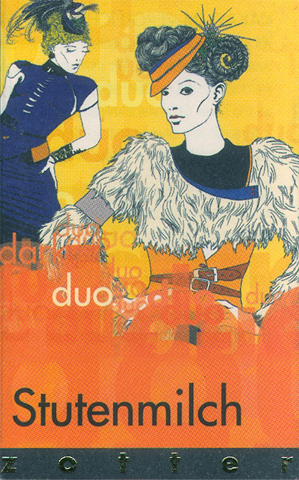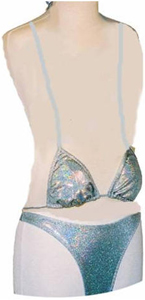
Impact
In the All-Austrian ‘Alternative-Milk’ Quartet conducted by Josef Zotter (the others being Schaf [Sheep], Ziegen [Goat] and Soja [Soy]), this Horse's Milk bar represents the modernist Arnold Schönberg, founder of 2nd Viennese School & developer of 12-Tone Technique.
A self-taught composer, he served in the Austrian army then sought to be equally militant with music, virtually destroying Wagner’s tonal chromaticism that drenched Vienna at the time in a radical break from the past. Odd considering Schönberg authored a textbook on tonal harmony! show more »
A self-taught composer, he served in the Austrian army then sought to be equally militant with music, virtually destroying Wagner’s tonal chromaticism that drenched Vienna at the time in a radical break from the past. Odd considering Schönberg authored a textbook on tonal harmony! show more »
Appearance 4.7 / 5
| Color: | very light for a D-M; chestnut blonde |
| Surface: | soft brush |
| Temper: | burnished |
| Snap: | nice ‘hello’ nicker |
Aroma 8.2 / 10
delicate complex: warm equestrian tone bristling with horse hair & talc -> shagbark & mahogany -> graham cracker filled in with red grape skin countered by cool blue steel
Mouthfeel 10.6 / 15
| Texture: | shattering; quite a lot of grain |
| Melt: | drooling trot on a mud track |
Flavor 40.8 / 50
graham crackers lead out the gate swamped by hyper sweet maple-like sap... with fruit jelly / bean undertone of a historical account inscribing ‘mildly pungent rapé wine’ -> tender candied-apricot with its tiny red cheeks pulls out all the charm stops, turning saccharine until salted sweet-cream shows up -> cocoa malt -> almond milk
Quality 14.3 / 20
Immoderate, cloying & uncontainable. Zotter, ever the fearless omnivore (see his Hand-Scooped Line for further gastro-analysis), offers milk from cows, goats, sheep & now mares. In conjunction with Choco-Lina’s sheep Milk Chocolate and al Nassma’s Camels, all made in Austria, they together position that country as the ultra-milkmen of the world, begging how much longer before their cat’s milk, pig’s milk & dog’s milk hit the market.
Known mainly for cosmetic & medical healing - Genghis Khan powered up on Mare's Milk in keeping with Mongols drinking it with their salty tea for centuries; & that milk & honey bath of Cleopatra... probably mare’s milk - though less so as a nutritional food due to scarcity & expense.
Yet another milk touted for its close nutritional composition to human breast milk (also cited for goat & sheep). The familiar litany runs ‘easier to digest, more suitable pH levels, lower fat content...’ But mare’s milk actually contains more lactose (unless fermented) & possesses laxative properties (as does cacáo for a double-whammy effect in this bar). Milked several times a day in a very time-consuming collection, mares have only 2 teats (compared to a cow’s 4) located directly between their powerful hind legs, producing but a quart per day, most of which goes to the young foal(s). To illustrate, if women were built like horses, they’d look like this (thank you Don Burleson):
 If that’s a turn off, think of what women would look like as cows. Then ask this symbolic question: based on appearances, form & function, which appeals more – a horse or a cow?
If that’s a turn off, think of what women would look like as cows. Then ask this symbolic question: based on appearances, form & function, which appeals more – a horse or a cow?
Alternatively, given a choice between them for reincarnation, which one would you be? So why do humans persist with cow’s milk? Something about dairy cream fat just salivates the senses in this Age of Generation XL.
Mare’s milk tastes thinner / sweeter... closer to the water than to milk. Zotter therefore rides very easy in the saddle, a gentle hand on the girdle (conche) & griddle (roaster), prompting another question: why surround it with a higher 57% cacáo & less milk (16%) than, say, his Goat Bar which is just 45% cacáo-content but 20% goat's milk, when goat flavor traditionally intrudes more heavily on a chocolate?
To prove a point of his high craft?
The simpler answer: this just gallops out of the stables at uncontrollable hyper-velocity, any urge to merge with cacáo overpowered by the inherent sugars in mare’s milk. Add to that the roughly 23% cane sugar, & this amounts to an über-sweet MC parading as a Dark-Milk. Given mare’s gentle character, Zotter thought well in theory to squire it with a compatible cacáo (probably the Nicaragua Matagalpa) & pack it with some salt instead of vanilla. But the execution stumbles in practice. Mare’s milk needs stronger, more masculine chocolate to back it. Could easily tolerate an ever higher cacáo-count (mid-60s at least), cut down on the cane sugar, keep-the-salt / ditched-vanilla format, & better stage the mixing of components to reduce that sand Texture.
This filly shows a winning horse; just needs more training.
ING: cocoa mass, raw cane sugar, mare milk pwdr (16%), cacáo butter, salt
Reviewed Autumn 2010
Known mainly for cosmetic & medical healing - Genghis Khan powered up on Mare's Milk in keeping with Mongols drinking it with their salty tea for centuries; & that milk & honey bath of Cleopatra... probably mare’s milk - though less so as a nutritional food due to scarcity & expense.
Yet another milk touted for its close nutritional composition to human breast milk (also cited for goat & sheep). The familiar litany runs ‘easier to digest, more suitable pH levels, lower fat content...’ But mare’s milk actually contains more lactose (unless fermented) & possesses laxative properties (as does cacáo for a double-whammy effect in this bar). Milked several times a day in a very time-consuming collection, mares have only 2 teats (compared to a cow’s 4) located directly between their powerful hind legs, producing but a quart per day, most of which goes to the young foal(s). To illustrate, if women were built like horses, they’d look like this (thank you Don Burleson):
 If that’s a turn off, think of what women would look like as cows. Then ask this symbolic question: based on appearances, form & function, which appeals more – a horse or a cow?
If that’s a turn off, think of what women would look like as cows. Then ask this symbolic question: based on appearances, form & function, which appeals more – a horse or a cow?Alternatively, given a choice between them for reincarnation, which one would you be? So why do humans persist with cow’s milk? Something about dairy cream fat just salivates the senses in this Age of Generation XL.
Mare’s milk tastes thinner / sweeter... closer to the water than to milk. Zotter therefore rides very easy in the saddle, a gentle hand on the girdle (conche) & griddle (roaster), prompting another question: why surround it with a higher 57% cacáo & less milk (16%) than, say, his Goat Bar which is just 45% cacáo-content but 20% goat's milk, when goat flavor traditionally intrudes more heavily on a chocolate?
To prove a point of his high craft?
The simpler answer: this just gallops out of the stables at uncontrollable hyper-velocity, any urge to merge with cacáo overpowered by the inherent sugars in mare’s milk. Add to that the roughly 23% cane sugar, & this amounts to an über-sweet MC parading as a Dark-Milk. Given mare’s gentle character, Zotter thought well in theory to squire it with a compatible cacáo (probably the Nicaragua Matagalpa) & pack it with some salt instead of vanilla. But the execution stumbles in practice. Mare’s milk needs stronger, more masculine chocolate to back it. Could easily tolerate an ever higher cacáo-count (mid-60s at least), cut down on the cane sugar, keep-the-salt / ditched-vanilla format, & better stage the mixing of components to reduce that sand Texture.
This filly shows a winning horse; just needs more training.
ING: cocoa mass, raw cane sugar, mare milk pwdr (16%), cacáo butter, salt
Reviewed Autumn 2010




